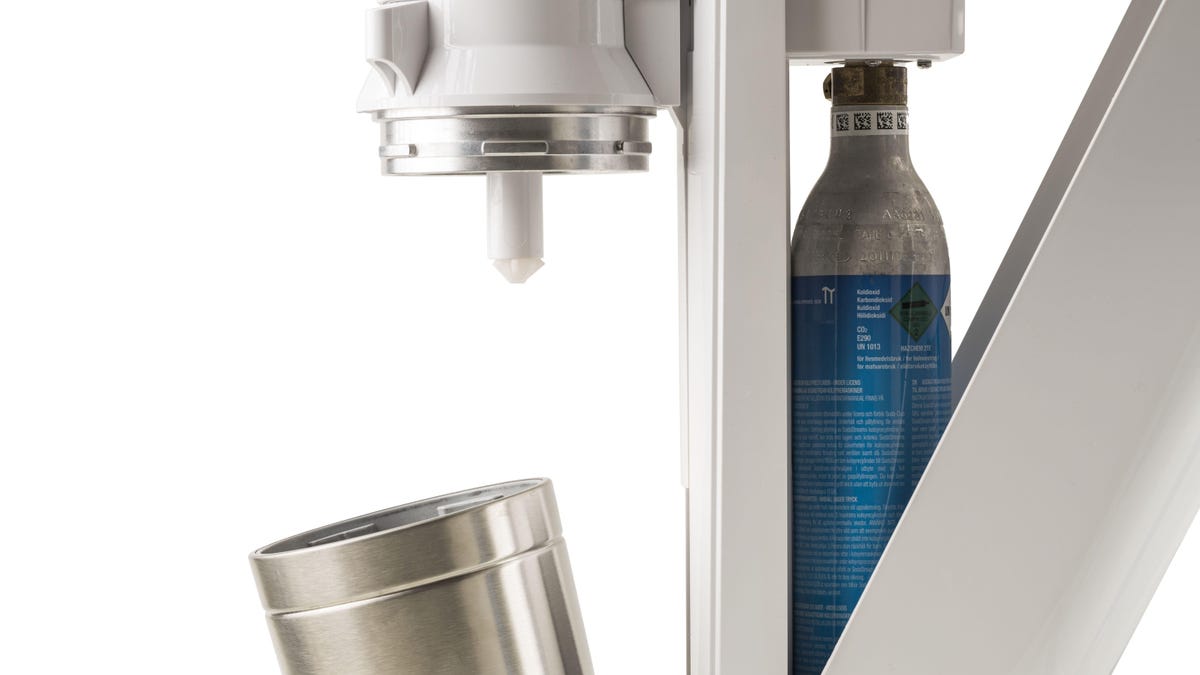The Surprising Area of Health We All Need to Start Paying Attention to, Stat
Get ready to be surprised.

For as long as I can remember, I’ve had a love-hate relationship with my teeth. Even after four years of braces that defined my middle school existence, I’ve been adamant about smiling lips-only. Needless to say, I’ve been craving a few key oral health tips to help me embrace my not-so-pearly whites, and more importantly, take care of them for years to come.
In a world that’s rapidly (and thankfully) becoming more inclusive as it relates to beauty, I’ll admit this fraught relationship isn’t something I’m proud of. Love the skin you’re in and accept your flaws and move on, right? Eh… sometimes, it’s a little harder than it sounds. But in the name of holistic health and all-encompassing beauty habits and routines, I’ve decided the best thing I can do is give this area of wellness a little less criticism and a lot more love.
I got in touch with Dr. Gerry Curatola, a biologic restorative dentist, to get an update on what oral care looks like in 2022 and the best oral health tips to keep your mouth pain-free and smilin’ strong. Let’s get to it.
Feature image by Riley Reed.
Beyond our bi-annual dentist visits and going through the motions of keeping our teeth clean, oral health doesn’t get much attention in the wellness world. Why?
Nowadays, as a health-centric culture, we’re laser-focused on perfecting plant-based meals, have committed to a physical fitness routine, and are even coming around to the importance of supporting our mental health. But oral health? It often goes overlooked. “150 years ago, medicine and dentistry became illogically separated,” says Dr. Curatola. “People often do not realize that physical illness both enters and manifests itself in the mouth. Oral health is the 800-pound gorilla in the wellness space.”
What does an ideal brushing and flossing routine look like?
When it comes to wellness, while I love indulging in my routines and enjoying self-care to the fullest, I’m always looking for the cut-and-dry, optimal advice to confirm I’m following a health-promoting path. The answer? Your brushing and flossing routine depends on your eating and mealtime habits, as food will impact your mouth’s pH balance.
“After eating, wait 30 minutes to an hour before brushing your teeth,” advises Dr. Curatola. “When you have a healthy oral microbiome, your saliva rebalances your mouth after eating. If you brush too soon, the food’s acid may soften or weaken tooth enamel.”
As for the exact frequency and ideal length of time? “Brush twice a day for at least two minutes and floss at night,” says Dr. Curatola, who emphasizes the “at least” and encourages brushing 3-4 minutes when possible.
Are there benefits to a routine that includes mouthwash?
The answer will likely come as a surprise (at least, it did for me). “Mouthwash is an American invention which has no real value other than a cleaner feeling after brushing to rinse out debris,” notes Dr. Curatola. “If you brush twice a day and floss nightly,” he adds, “it isn’t essential to use a separate product other than water.” Let the shock and awe sink in.
When it comes to sugarless gum, it’s often touted as an oral health-promoting habit. Is there any truth in this, or does it do more harm than good?
While they feel antiquated now, the Orbit commercials promoting a “just brushed clean feeling” certainly held an influence over our collective reception of chewing gum. And while the gum chewers among us may have ditched the big brands and are now opting for sugarless gum from local co-ops or health stores, according to Dr. Curatola, the latter still isn’t a great choice. “Beware of sugarless chewing gum that uses sugar alcohol chemicals such as xylitol, erythritol, and sorbitol as sweetening ingredients. While these have been touted as healthy by the manufacturers, they are calorie-free ‘junk chemicals’ which are not metabolized, or even absorbed, by the human body.”
The result? Dr. Curatola cites the disruption sugarless gums can cause to both the oral and gut microbiomes, what he defines as “the essential natural microbial communities that keep us alive.” He shares that many people who suffer from dry mouth seek out sugarless gum as a temporary solution, but suggests another route. “In dry mouth, food remnants and acids stay on the teeth allowing tooth decay and enamel erosion. Staying hydrated should prevent it. However, if you still suffer from dry mouth, it’s important to understand the cause. It could be an airway issue that can be addressed by a biologic dentist.”
What are the best foods for white teeth?
Dr. Curatola asserts that “White teeth are the result of a balanced oral microbiome and a clear airway to prevent dry mouth.” The good news is that a healthy teeth-promoting diet follows many of the same guidelines of a whole foods-focused, plant-based eating plan. “A healthy diet includes fibrous fruits and vegetables in many colors. Your teeth are less likely to be stained if the enamel is protected by the pH balance in your mouth.”
What does this look like specifically? Dr. Curatola shares the following list of enzyme-enhanced, lacto-fermented fruits, veggies, and beverages, that he says “allow the fiber to act like ‘tiny toothbrushes’ to clean your teeth from foods that stain, like red wine.”
celeryapplescarrotskaledill pickleskombuchaIn Dr. Curatola’s book, The Mouth-Body Connection, his signature, Triple A Diet outlines an anti-inflammatory and alkalizing eating plan filled with “natural organic foods that are as close to their original state as possible.”
What tips and tricks should we keep in mind if we’re looking to start a whitening routine?
It all starts with a professional dental cleaning. “The dental hygienist can remove mineralized plaque that can deposit above and below the gum line,” says Dr. Curatola. He emphasizes that kicking off your whitening journey in a dental office ensures that “steps are taken to isolate the soft tissue (i.e., gums) so that the oxidizing agents such as carbamide and hydrogen peroxide do not deplete these tissues of the important antioxidants necessary for periodontal health.”

 Lynk
Lynk 































